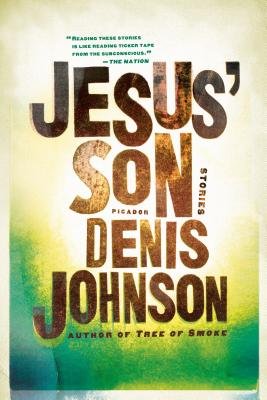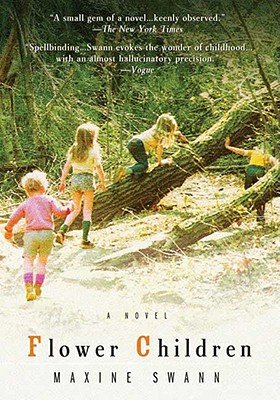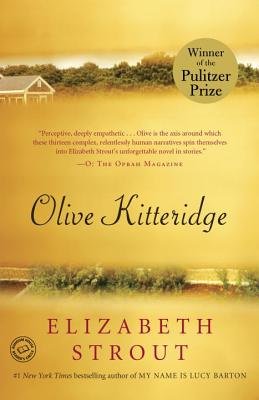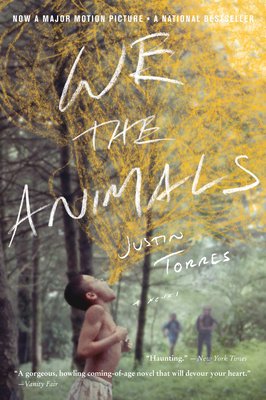We were both completely blown away by Cara Blue Adams’ book of linked short stories, You Never Get It Back (University of Iowa Press, December 2021), which won the John Simmons Short Fiction Prize in the Iowa Short Fiction Prize Series.
This debut, which zigzags through the life of the main character, Kate, from childhood to early adulthood, was impossible to put down and reminded us again how well-written short stories can hold so much delicacy and power at the same time, building a complete and multi-faceted universe out of single, focused moments. The writing in You Never Get It Back is gorgeous, compelling, and, as Brandon Taylor said of the book, “…left [us] breathless.”
We’re so pleased to share Cara’s excellent reading list of some of her favorite interlinked story collections below. If we were assembling this list, we’d certainly include You Never Get It Back.
The Interlinked Story Collection
I fell in love with the short story form at Smith College, where I was lucky enough to take a fiction workshop with the story writer Dean Albarelli, and with the interlinked story collection a little more slowly, over perhaps the next decade. Living in Boston after college, I began reading not just individual stories but story collections, and, later, as I assembled my own stories into a book, I started to reflect on what made a collection a pleasurable experience. I discovered that though some of my favorite collections are unlinked—including, for example, Rebecca Lee’s excellent Bobcat—each is firmly held together by some aesthetic glue: a theme, a place, or perhaps just a distinct sensibility.
Many, though, were interlinked. Such a collection is a marvel: each story offers the distilled pleasure of the form, and added to that is the pleasure of a longer narrative. Here are a few of my favorites of the past fifty years.
The Beggar Maid, by Alice Munro (1977)
It’s shocking to me that I only read this once my own interlinked collection was essentially finished; it feels so essential to my project. Elliott Holt, a friend and one of my favorite contemporary story writers herself—check out her uncollected stories “Your Father Would be Proud” and “Fem Care” for a taste of her exceptional work—recommended this book to me. It follows a young woman named Rose who grows up in a rural Canadian working-class family and who leaves to pursue an education and a larger life. The stories contain piercing insight about many things, including social class and the complex nature of love.
Jesus’ Son, by Denis Johnson (1992)
A modern classic, this book gives us Johnson’s intense lyricism combined with a minimalist style. Fuckhead, the narrator, ranges around the Midwest and Pacific Northwest in the late seventies and eighties with his friends, doing drugs and trying to find work and to navigate the world, which is continually surprising and often both dangerous and funny. These spare, often surreal stories are keenly aware of life’s hardships and its absurdities and delights. Johnson’s images are exquisite too: vivid, musical, indelible. Try forgetting the phrase “clouds like great grey brains”! I can’t.
Lost in the City, by Edward P. Jones (1992)
Like Munro, Jones writes stories that feel utterly real and dense but absorbing; some feel like novels condensed into a quietly gorgeous twenty or thirty pages. These stories all concern an African-American community in Washington, D.C. Fascinatingly, each story in this book is linked to a story in another collection, All Aunt Hagar’s Children. “Marie” is among my favorites. It’s the last story in the collection, and it follows a woman named Marie—“old and getting older,” according to her, who, at the beginning, struggles with the unreasonable demands of the Social Security office. When faced with violence, emotional and physical, she responds in kind. Confronting a would-be robber, she makes use of a knife she carries, and we get one of my favorite lines in the book: “I will not be moved, some organ in the neighborhood of the heart told the heart.”
Flower Children, by Maxine Swann (2007)
About four children growing up in the 1970s and 1980s in rural Pennsylvania with bohemian parents who split up, Flower Children captures a child’s perspective in astute and moving ways. Swann is great at the quiet gesture that reveals much more than one would imagine it could. The word “gem” comes up a lot when people discuss her; it’s right. She opens up the family to us in controlled and gorgeous prose, taking us to Boston, New England, and Long Island to meet the children’s father’s friend and their grandparents. It makes me recall my own childhood, although I grew up later and in Vermont.
Olive Kitteridge, by Elizabeth Strout (2008)
I worried that this book would be boring; it was not. Everyone knows it now, I’m sure; it’s yet another modern classic. Olive Kitteridge and her husband, Henry, along with their son Chris and various members of Crosby, the small Maine town outside Portland in which the book is set, lead lives that are exactly as complex and fascinating and hilarious and tragic as any ordinary person’s life, if you look closely enough (which is to say: immensely).
We the Animals, by Justin Torres (2011)
This is actually a slender novel, but each vignette stands alone, and my understanding is that the book began as story collection manuscript, so I’ve taken the liberty of including it here. It’s about the childhood and coming of age of a boy who grows up in upstate New York, the child of working-class parents from Brooklyn, one of whom is white and one of whom is Puerto Rican. Torres’s prose is lyrical and captivating, and displays a poet’s ear for language, though he is not a poet, and the stories are funny and piercing.
Cities I’ve Never Lived In, by Sara Majka (2016)
These rigorously intelligent and precise stories feel like autofiction—the details are so apt, the voice both so intimate and so convincing—and Majka says in interviews that she does draw upon experience, but they also sometimes take a magical turn, and the book can be haunting in its effects. Set mostly in Maine and New England, the stories follow a young woman who has recently divorced and explore poverty, art, love, and loneliness. A dry wit and a sadness pervade the book; when I think of it, I think of islands, oil paintings of birds, and fog.
Optic Nerve, by María Gainza, translated by Thomas Bunstead (2019)
Gainza is an Argentinian art critic, and these stories center on an Argentinian woman who is deeply knowledgeable about art and who works in and around it, using her stories about art and her knowledge of it to shape her narrative. (I say stories; each could stand alone, though the book was called a novel.) It blends art criticism and fiction. If you like W.G. Sebald, you’ll likely enjoy this, and if you don’t, you may well enjoy it anyway. It was a favorite of my books the year that it came out, and it has stayed with me. It’s one that I already know I will return to throughout the years.
Cara Blue Adams is the author of You Never Get It Back, winner of the John Simmons Short Fiction Prize in the Iowa Short Fiction Award Series. She has published over twenty stories in leading magazines, including Granta, The Kenyon Review, American Short Fiction, Alaska Quarterly Review, Epoch, The Sun, The Missouri Review, The Mississippi Review, Story, and Narrative, which named her one of their “15 Below 30.” Stories in You Never Get It Back have been awarded the Kenyon Review Short Fiction Prize, judged by Alice Hoffman, the Missouri Review Peden Prize, judged by Jessica Francis Kane, and the Meringoff Prize in Fiction, awarded by the Association of Literary Scholars, Critics, and Writers. Originally from Vermont, she is an associate professor at Seton Hall University and lives in Brooklyn and the Hudson Valley.









